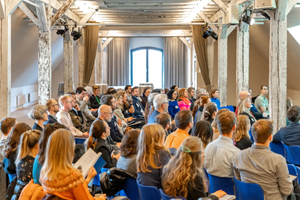Nicholas Byczynski, Director of Building Services, at AESG
Dubai, United Arab Emirates – 15 October 2024 – As Middle East governments continue to advance their sustainability agendas, and concerns around the impact of extreme weather events continue to mount, public sector entities, corporates, and hospitality brands are increasingly seeking robust, energy efficient MEPF (Mechanical, Electrical, Plumbing and Fire) solutions. This is reflected in the over 100% year on year growth posted by AESG’s MEP division.
Nicholas Byczynski, Director of Building Services, at AESG largely credits this success to the division’s extensive utilisation of automation and digital design tools such as Building Information Modelling (BIM), Revit, Dynamo, Python and the IES Virtual Environment. “Clients are concerned with outcomes and currently, the key objectives we see across projects in the Middle East are enhancing energy efficiency and reducing operational overheads. By developing world-class digital design and automation capabilities, we have been able to cater to this need, delivering faster, more accurate models that reduce errors and rework during construction, and ensure that designs are optimised across the entire project lifecycle,” he said.
Byczynski stated that among the industry segments most actively pursuing Net Zero targets in the region are the giga- and mega- scale projects, critical infrastructure, and the hospitality sector. Alignment with government strategies and a desire to tangibly demonstrate sustainability commitments appear to be the key factors behind this.
Some of the metrics to consider at the early stage of design are energy-usage intensity (EUI), renewable-energy percentage, energy cost savings, water-usage intensity (WUI), recycling and waste-management rate, and indoor environmental quality (IEQ).
These measurements can be leveraged to drive down the consumption of resources through efficient design, high-quality construction, testing, and commissioning and handover, followed by operations that are fully cognizant of the project’s aspirations.
Consequently, AESG’s MEP division has seen clients in these sectors display appreciable eagerness to incorporate Internet of Things (IoT) devices into MEP systems, utilise active thermal mass regulation techniques, and pursue energy efficiency standards and environmental certifications like LEED, MOSTADAM and BREEAM.
With these paradigms representing the leading edge of the MEP industry, AESG has invested to recruit and foster top talent to cater to clients’ requirements. Over the last year alone, the company has more than quadrupled the size of its MEP engineering team and has clear plans to further scale its team of experts by 200% through 2025.
Against the backdrop of unprecedented rainfall in the UAE, and sweltering heatwaves across the region, developing new, climate-resilient systems and retrofitting existing infrastructure have also been key trends in the regional MEP industry. “This is definitely an area of focus for us in 2025. Digital design and simulation play especially significant roles in developing MEP systems that mitigate, or at least minimise, the impact of extreme weather events. As we have already developed extensive expertise in these areas, we are especially well-positioned to address this issue, and in doing so, safeguard our clients' prized assets and elevate the quality and resilience of the region's built environment,” said Byczynski.













